Search
Remove Ads
Advertisement
Summary 
Loading AI-generated summary based on World History Encyclopedia articles ...
Search Results
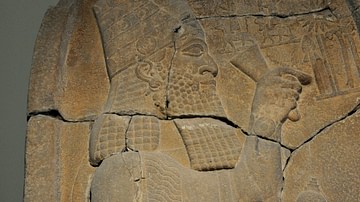
Definition
Esarhaddon
Esarhaddon (r. 681-669 BCE) was the third king of the Sargonid Dynasty of the Neo-Assyrian Empire. He was the youngest son of King Sennacherib (r. 705-681 BCE), and his mother was not the queen but a secondary wife, Zakutu (also known as...
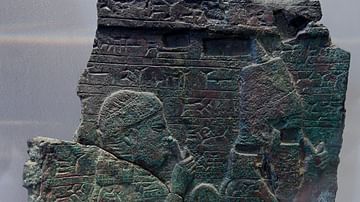
Definition
Zakutu
Zakutu (l. c. 728 - c. 668 BCE) was the Akkadian name of Naqi’a, a secondary wife of Sennacherib of Assyria (r. 705-681 BCE). Though she was not Sennacherib's queen, she bore him a son, Esarhaddon, who would succeed him. She may have ruled...
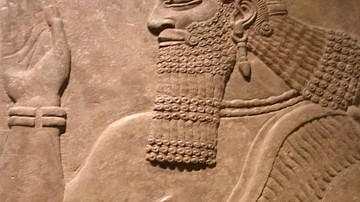
Definition
Neo-Assyrian Empire
The Neo-Assyrian Empire (912-612 BCE) was the final stage of the Assyrian Empire, stretching throughout Mesopotamia, the Levant, Egypt, Anatolia, and into parts of Persia and Arabia. Beginning with the reign of Adad Nirari II (912-891 BCE...
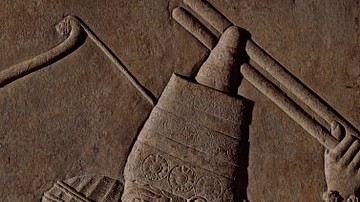
Definition
Ashurbanipal
Ashurbanipal (r. 668-627 BCE, also known as Assurbanipal) was the last of the great kings of Assyria. His name means "the god Ashur is creator of an heir" and he was the son of King Esarhaddon of the Neo-Assyrian Empire. In the Hebrew Tanakh...
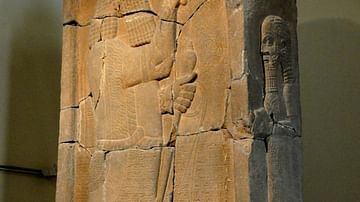
Image
Sam'al Stele of King Esarhaddon
This commemorative basalt stele depicts the Assyrian king Esarhaddon worshiping gods and symbols of gods. The king's left hand holds a royal mace and two ropes. These ropes pass through the lips of two captives. The kneeling smaller figure...

Image
King Esarhaddon
A close-up view of the upper part of the so-called Victory Stele of Esarhaddon depicting the Assyrian king Esarhaddon praying in front of symbols of deities. From the citadel at Sam'al/Zincirli, modern Southern Turkey. Neo-Assyrian Empire...
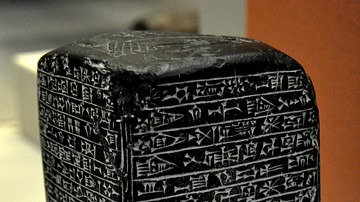
Image
Stone Monument of Esarhaddon
Irregular rectangular-sided monument recording Esarhaddon's restoration of Babylon; possibly black basalt; carved symbols on the upper surface. Height 8.5 inches. The stone is not local to Mesopotamia. The irregular shape of the object...
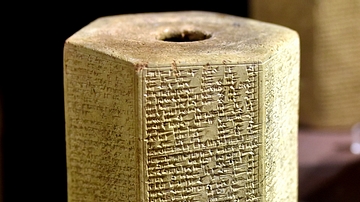
Image
Hexagonal Prism of Esarhaddon from Nimrud
The cuneiform inscription on this hexagonal clay prism narrates the construction works of a palace at the city of Nimrud by the Neo-Assyrian king Esarhaddon (reigned 680 - 669 BCE). Neo-Assyrian Period, 7th century BCE. From Nimrud, in modern-day...
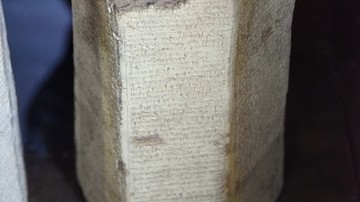
Image
Assyrian Prism of Esarhaddon
Hexagonal clay prism with cuneiform inscription narrating the military campaigns of the Assyrian king Esarhaddon (r. 680-669 BCE). Later on, the upper aspect was used a candle holder by the owner. Probably from Nineveh, Mesopotamia, modern-day...

Definition
Sargonid Dynasty
The Sargonid Dynasty was the last ruling house of the Neo-Assyrian Empire from 722-612 BCE, beginning with the reign of Sargon II and ending with fall of the Neo-Assyrian Empire. Some of the most famous kings in the history of Assyria come...